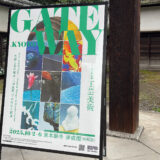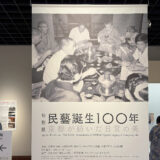Prologue: A Changing World and Seasons in Flux
As global warming intensifies, the shifts in the natural cycles that humanity has depended upon for millennia have become increasingly apparent. From the blooming of spring cherry blossoms arriving earlier than ever to the unsettling disruptions in agriculture and fishing harvests, how we experience and measure the seasons is gradually changing. These shifts are felt acutely in Japan, where an intricate relationship with nature and its cycles has long been integral to the culture.

The Japanese Tradition of Twenty-four Solar Terms (Nijūshi Sekki)
One of Japan’s most fascinating aspects of connection to the natural world is the ancient calendar of “Nijūshi Sekki” – Twenty-four Solar Terms. Originating in China and adapted to the Japanese landscape, this calendar breaks down the year into 24 distinct periods, each marked by natural events that signal seasonal transitions. Ranging from “Risshun” (the beginning of spring) to “Daikan” (the coldest period of winter), this calendar captures the fine-grained shifts within each season. It reflects how closely people in Japan observe even subtle changes in nature.

A Historical Bond with the Seasons
Throughout history, the Japanese have been deeply in tune with the changing seasons, incorporating this sensitivity into every facet of life.
- Literature: Seasonal themes are prevalent in classic Japanese poetry and literature, from the earliest poetry collections such as the Manyōshū to the renowned haiku of Matsuo Bashō, which often depicts fleeting natural scenes, the elegant seasonal motifs in “The Tale of Genji” by Murasaki Shikibu.
- Cuisine: Japanese cuisine is renowned for its emphasis on seasonal ingredients. Dishes are carefully crafted to highlight the flavors and textures of produce at its peak during a particular time of year.
- Arts: Traditional Japanese arts such as ikebana (flower arrangement), tea ceremony, and Noh theater are all closely tied to the seasons.
- Fashion: The Japanese have a long history of seasonal fashion, with clothing styles and materials changing to suit the weather and cultural events.
- Architecture and Interior Design: Traditional Japanese homes and gardens are designed to harmonize with the natural environment and provide opportunities for enjoying the changing seasons.
Japanese homes often incorporate seasonal elements, including changing flower arrangements and decor, to keep in harmony with the passing seasons. For instance, the traditional “tokonoma” alcove is frequently adorned with seasonally appropriate flowers or artwork.

Japanese Sensitivity to the Seasons in Contemporary Art
This enduring appreciation for the seasons is a defining characteristic of Japanese artistry. In traditional crafts such as pottery, lacquerware, and textiles, artisans weave seasonal themes into their work, creating pieces that resonate with a deeper cultural significance. This aesthetic sensitivity enriches each piece with a timeless, universal appeal, allowing the international art community to experience the uniquely Japanese view of nature.

Conclusion: Seasons as a Source of Artistic Depth
At Kogei Art KYOTO, we aim to share this deep, nuanced relationship with the seasons through exquisite handmade Japanese crafts. Each piece we present is beautiful and a reflection of a time-honored tradition. With every seasonal transition, we hope to bring some Japanese reverence for nature and art into your home, wherever you may be.





